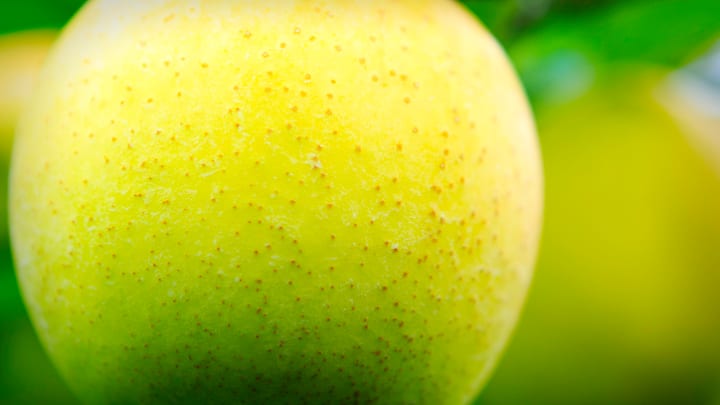The little pinprick spots on apples, pears, mangos, avocados, and potatoes are called lenticels (LEN-tih-sells), and they’re very important.
Plants need a constant stream of fresh air, just like people, and that “fresh air” means carbon dioxide. Flowers, trees, and fruit all take in carbon dioxide and give off oxygen. But unlike people, plants don’t have nostrils.
That's where a plant's lenticels come in. Each little speck is an opening in the fruit or tuber’s skin or the tree’s bark. Carbon dioxide goes in, and oxygen comes out. Through these minuscule snorkels, a plant is able to “breathe.”
Like any opening, lenticels are vulnerable to infection and sickness. In an apple disease called lenticel breakdown, a nutrient deficiency causes the apples’ spots to darken and turn into brown pits. This doesn’t hurt the inside of the fruit, but it does make the apple look pretty unattractive to shoppers expecting a perfectly formed apple. In the equally unappealing disease known as lenticel blotch pit, the skin around the apple’s lenticels gets patchy and dark, like a weird rash.
Edible fruits and vegetables are not the only plants with lenticels. Woody plants sport the spots on their stems and trunks, and they often produce pleasing patterns and textures valued by horticulturists. Species of birch trees have horizontal lenticels on their trunks; the papery bark of river birch (Betula nigra) peels off in spring to reveal a new layer of lenticelled tissue. Dot-like lenticels are also visible on the stems of native North American shrubs like oakleaf hydrangea (Hydrangea quercifolia), pawpaw (Asimina triloba), sweet-shrub (Calycanthus floridus), and northern spicebush (Lindera benzoin), to name a few.
Have you got a Big Question you'd like us to answer? If so, let us know by emailing us at bigquestions@mentalfloss.com.
Discover More Stories About Plants:
A version of this story was published in 2017; it has been updated for 2025.
